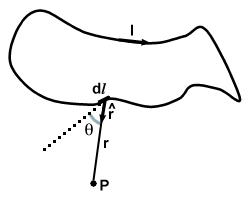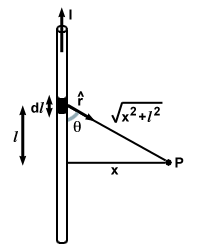Please wait while we process your payment
If you don't see it, please check your spam folder. Sometimes it can end up there.
If you don't see it, please check your spam folder. Sometimes it can end up there.
Please wait while we process your payment
Get instant, ad-free access to our grade-boosting study tools with a 7-day free trial!
Learn more



This site is protected by reCAPTCHA and the Google Privacy Policy and Terms of Service apply.
Create Account
Select Plan
Payment Info
Start 7-Day Free Trial!

Annual
2-49 accounts
$22.49/year + tax
50-99 accounts
$20.99/year + tax
Select Quantity
Price per seat
$29.99 $--.--
Subtotal
$-.--
Want 100 or more? Request a customized plan
You could save over 50%
by choosing an Annual Plan!

SAVE OVER 50%
compared to the monthly price!
| Focused-studying | ||
| PLUS Study Tools | ||
| AP® Test Prep PLUS | ||
| My PLUS Activity | ||
$22.49/month + tax
Save 25%
on 2-49 accounts
$20.99/month + tax
Save 30%
on 50-99 accounts
| Focused-studying | ||
| PLUS Study Tools | ||
| AP® Test Prep PLUS | ||
| My PLUS Activity | ||
No Fear provides access to Shakespeare for students who normally couldn’t (or wouldn’t) read his plays. It’s also a very useful tool when trying to explain Shakespeare’s wordplay!
Erika M.
I tutor high school students in a variety of subjects. Having access to the literature translations helps me to stay informed about the various assignments. Your summaries and translations are invaluable.
Kathy B.
Teaching Shakespeare to today's generation can be challenging. No Fear helps a ton with understanding the crux of the text.
Kay H.
No Fear provides access to Shakespeare for students who normally couldn’t (or wouldn’t) read his plays. It’s also a very useful tool when trying to explain Shakespeare’s wordplay!
Erika M.
I tutor high school students in a variety of subjects. Having access to the literature translations helps me to stay informed about the various assignments. Your summaries and translations are invaluable.
Kathy B.
Teaching Shakespeare to today's generation can be challenging. No Fear helps a ton with understanding the crux of the text.
Kay H.
Create Account
Select Plan
Payment Info
Start 7-Day Free Trial!
You will only be charged after the completion of the 7-day free trial.
If you cancel your account before the free trial is over, you will not be charged.
You will only be charged after the completion of the 7-day free trial. If you cancel your account before the free trial is over, you will not be charged.
Order Summary
Annual
7-day Free Trial
SparkNotes PLUS
$29.99 / year
Annual
Quantity
51
PLUS Group Discount
$29.99 $29.99 / seat
Tax
$0.00
SPARK25
-$1.25
25% Off
Total billed on Nov 7, 2024 after 7-day free trail
$29.99
Total billed
$0.00
Due Today
$0.00
Promo code
This is not a valid promo code
Card Details
By placing your order you agree to our terms of service and privacy policy.
By saving your payment information you allow SparkNotes to charge you for future payments in accordance with their terms.
Powered by stripe
Legal
Google pay.......



Please wait while we process your payment

Sorry, you must enter a valid email address
By entering an email, you agree to our privacy policy.
Please wait while we process your payment

Sorry, you must enter a valid email address
By entering an email, you agree to our privacy policy.
Please wait while we process your payment

Your PLUS subscription has expired
Please wait while we process your payment
Please wait while we process your payment

Calculus Based Section The Magnetic Field of Any Current Carrying Wire (The Biot-Savat Law)
Having established the magnetic field of the simplest cases, straight wires, we must go through some calculus before analyzing more complex situations. In this section we shall generate an expression for the small contribution of a segment of a wire to the magnetic field at a given point, and then show how to integrate over the whole wire to generate an expression for the total magnetic field at that point.
Consider a randomly shaped wire, with a current I running through it, as
shown below.

 , then the contribution by the
segment dl is given by:
, then the contribution by the
segment dl is given by:
smallsegment
| dB | = |  | |
| = |  |
This equation is quite complicated, and is difficult to
understand on a theoretical level. Thus, to show its applicability, we
will use the equation to calculate something we already know: the field
from a straight wire. We begin by drawing a diagram showing a straight
wire, including an element dl, in relation to a point a distance x
from the wire:

 . In addition, the angle between
. In addition, the angle between  and dl is
given by sinθ =
and dl is
given by sinθ =  . Thus we have the
necessary values to plug into our equation:
. Thus we have the
necessary values to plug into our equation:
 =
= 
| B | = |  | |
| dB | = |   | |
| = |  = =   |
 . We evaluate this expression
using our limits:
. We evaluate this expression
using our limits:





 l, implying that plugging in a value of infinity
yields the value 1/x2. When we plug in our negative infinity, we get
-1/x2 in a similar manner. Thus:
l, implying that plugging in a value of infinity
yields the value 1/x2. When we plug in our negative infinity, we get
-1/x2 in a similar manner. Thus:


 -
- 
 =
= 
Please wait while we process your payment





